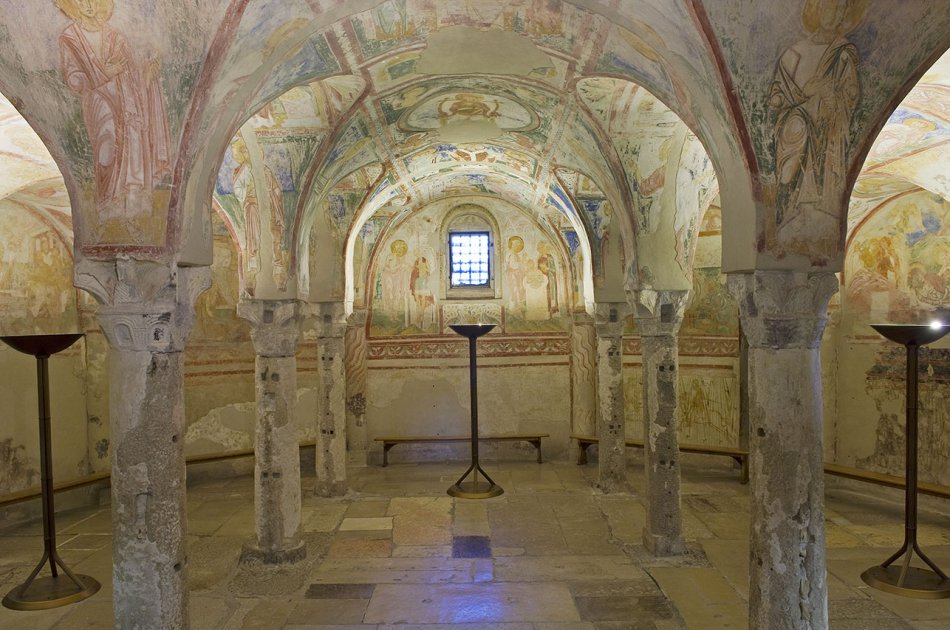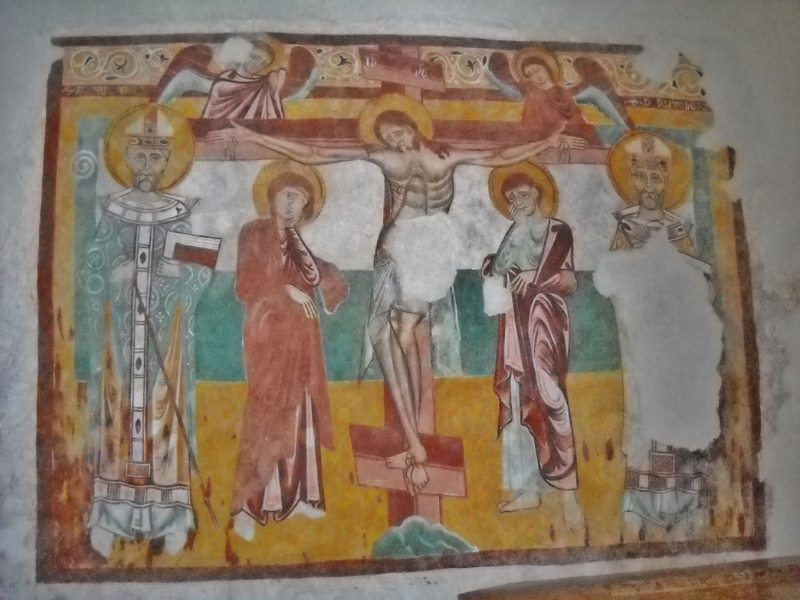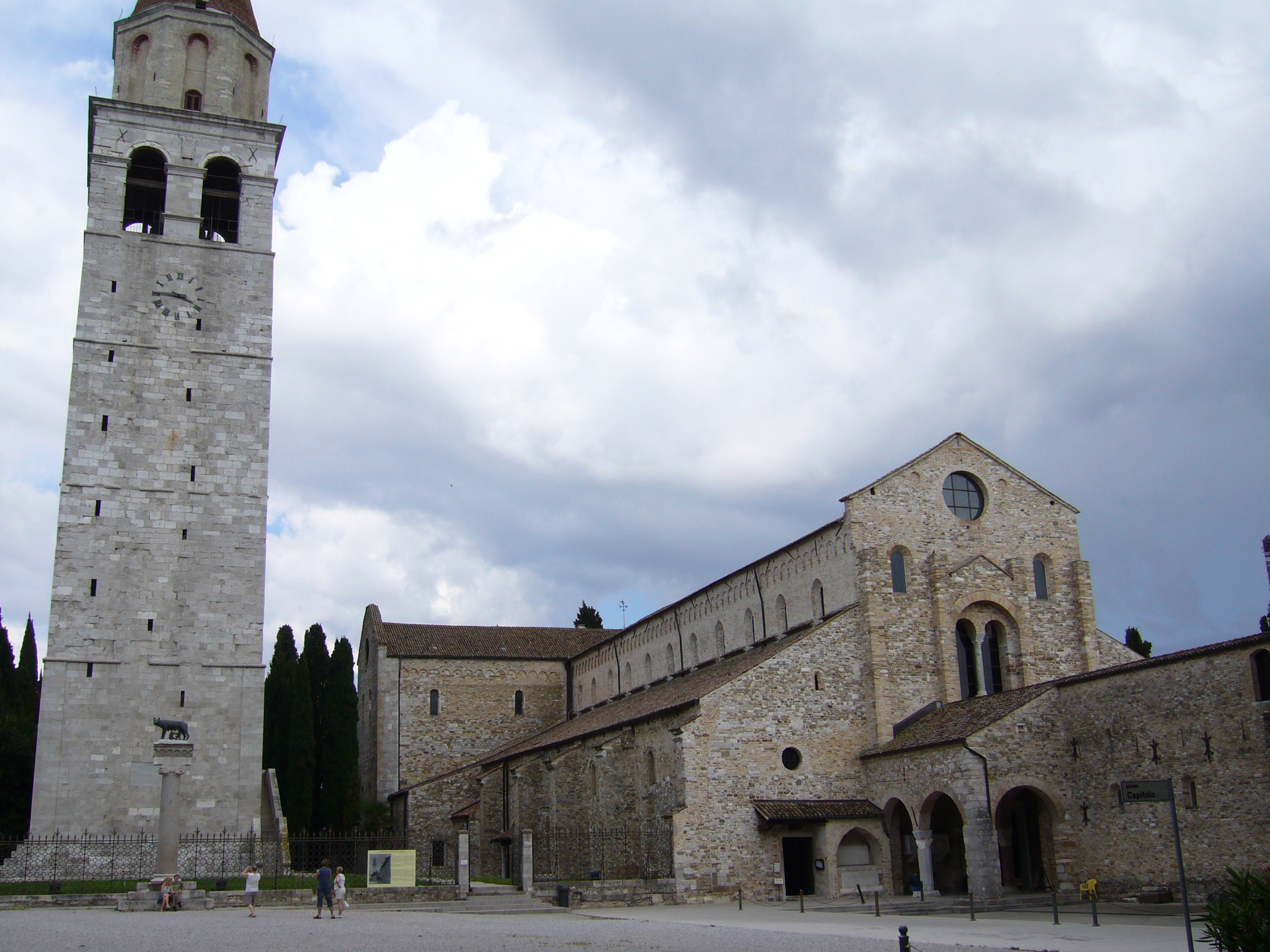An extensive fresco program remains mostly intact in the crypt of Aquileia Cathedral, a UNESCO site in the Province of Udine. Although the dating of the crypt’s frescoes has been debated, comparative evidence with twelfth-century frescoes in the nearby Abbey of Santa Maria Maggiore has firmly dated those at Aquileia to the late-twelfth century. The dating proves to be politically significant because the frescoes attempt to validate the apostolic succession of the cathedral through St. Hermagoras, who was, as his contested hagiography proposes, instructed by the apostle Mark to go and found a new church in northern Italy. This founding story first became utilized in the ninth century, when the relic crypt was constructed and, then, again in the twelfth century when Aquileia needed to assert its power over Venice.
Tensions between the two cities were long-standing. Both regions were vying for political and religious authority as patriarchal cities amidst territorial claims that were being asserted by Byzantine, Papal, and Imperial forces. Each city continually tried to establish primary in their area of Italy. In the ninth century, Venice presumably translated the relics of St. Mark to build and dedicate their own cathedral, thus challenging the apostolic lineage boasted by Aquileia. Venice’s forceful appropriation of the saint’s relics required Aquileia to redefine and restate its place in the apostolic succession by further highlighting the role of St. Hermagoras, the city’s first bishop, appointed by St. Mark. The style and organization of all the frescoes in the crypt, produced when tensions between the two cities had reignited in the twelfth century, further reveal Aquileia’s desire to assert itself unequivocally as the city with true apostolic succession.
A narrative scene of St. Mark consecrating Hermagoras emphasizes the importance of this succession for the space and, thus, Aquileia Cathedral. Although the hagiography and the frescoes support the tenure and primacy of the Aquileia Cathedral, textual records for St. Hermagoras do not pre-date the fourth century. The interest in the authority and legitimacy of Hermagoras’ hagiography, then, points to political divides occurring in northern Italy in the twelfth century.
Further Reading:
Thomas E. Dale, Relics, Prayer, and Politics in Medieval Venetia, Romanesque Painting in the Crypt of Aquileia (Princeton: Princeton University Press, 1997).
The Consecration of St. Hermagoras, Aquileia Cathedral, twelfth century, fresco.
The Crucifixion, Aquileia Cathedral, twelfth century, fresco.
View of Crypt, Aquileia Cathedral, ninth-twelfth centuries, fresco.
Aquileia Cathedral, Udine, Italy.
View of Upper Church and façade of crypt, Aquileia Cathedral, Udine, Italy.





